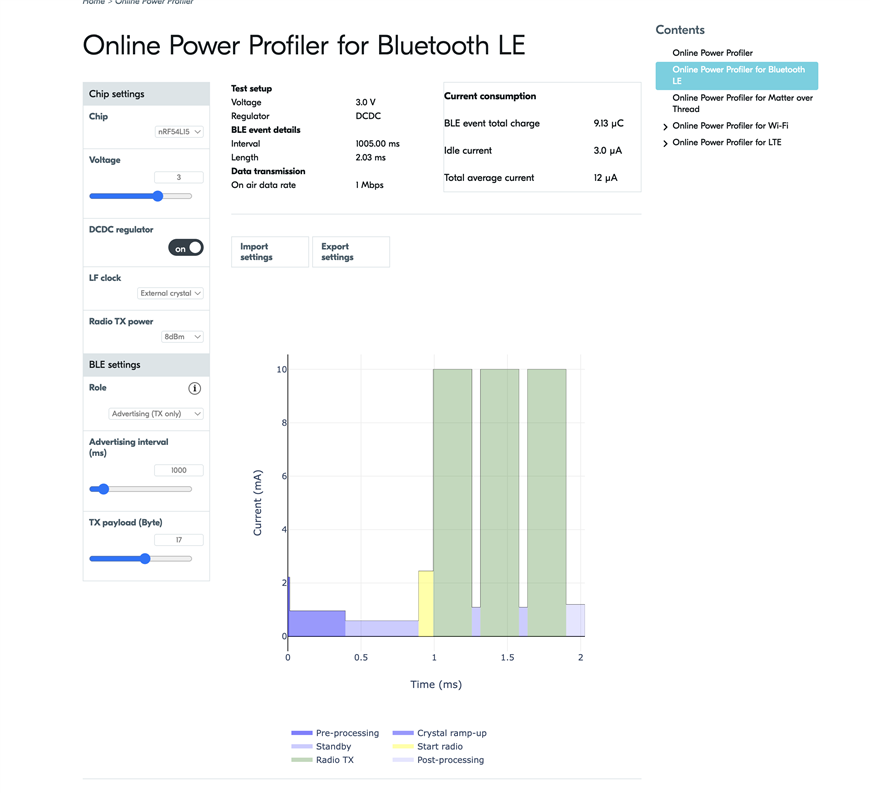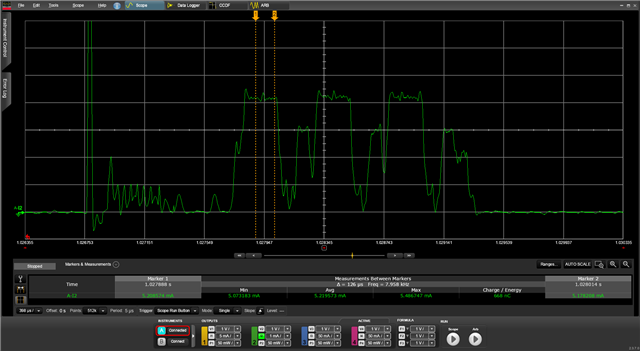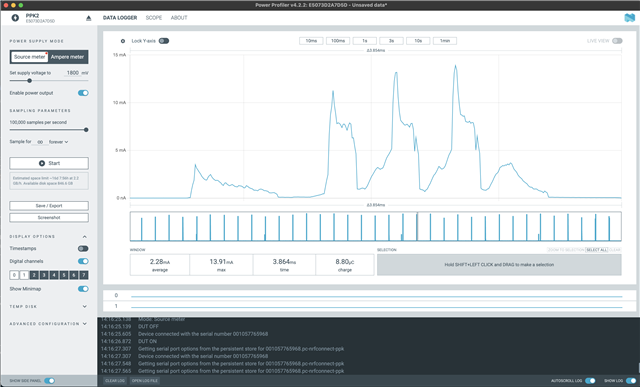Hi, I was using the BLE online power profiler to determine possible power savings with the nRF54L15DK over the nRF52840 using the zephyr bluetooth broadcaster sample. The profiler suggests that when ble advertising at 0dBm every 1s, the total average current should be around 8.1uA.
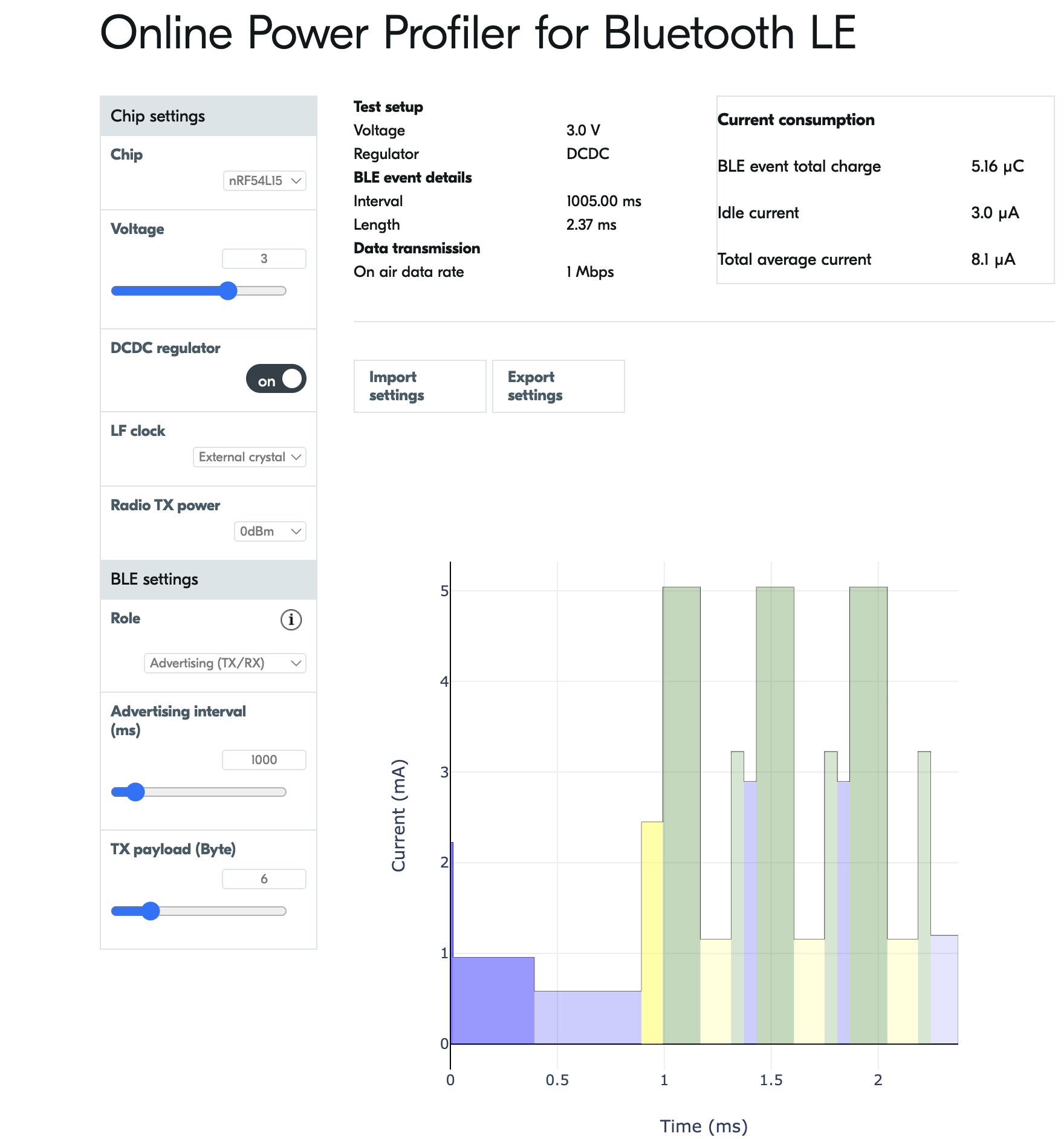
I attempted to recreate these numbers by modifying the zephyr broadcaster sample:
- added CONFIG_PM_DEVICE=y and CONFIG_PM_DEVICE_RUNTIME=y
- set CONFIG_SERIAL=n
- set CONFIG_RAM_POWER_DOWN_LIBRARY=y and disabled unused RAM in main()
- changed application to turn on advertising @1 second and exit
- attached a PPK2 in ammeter mode to the devkit pins on P6
The power consumption seems much higher than what the online power profiler claims:
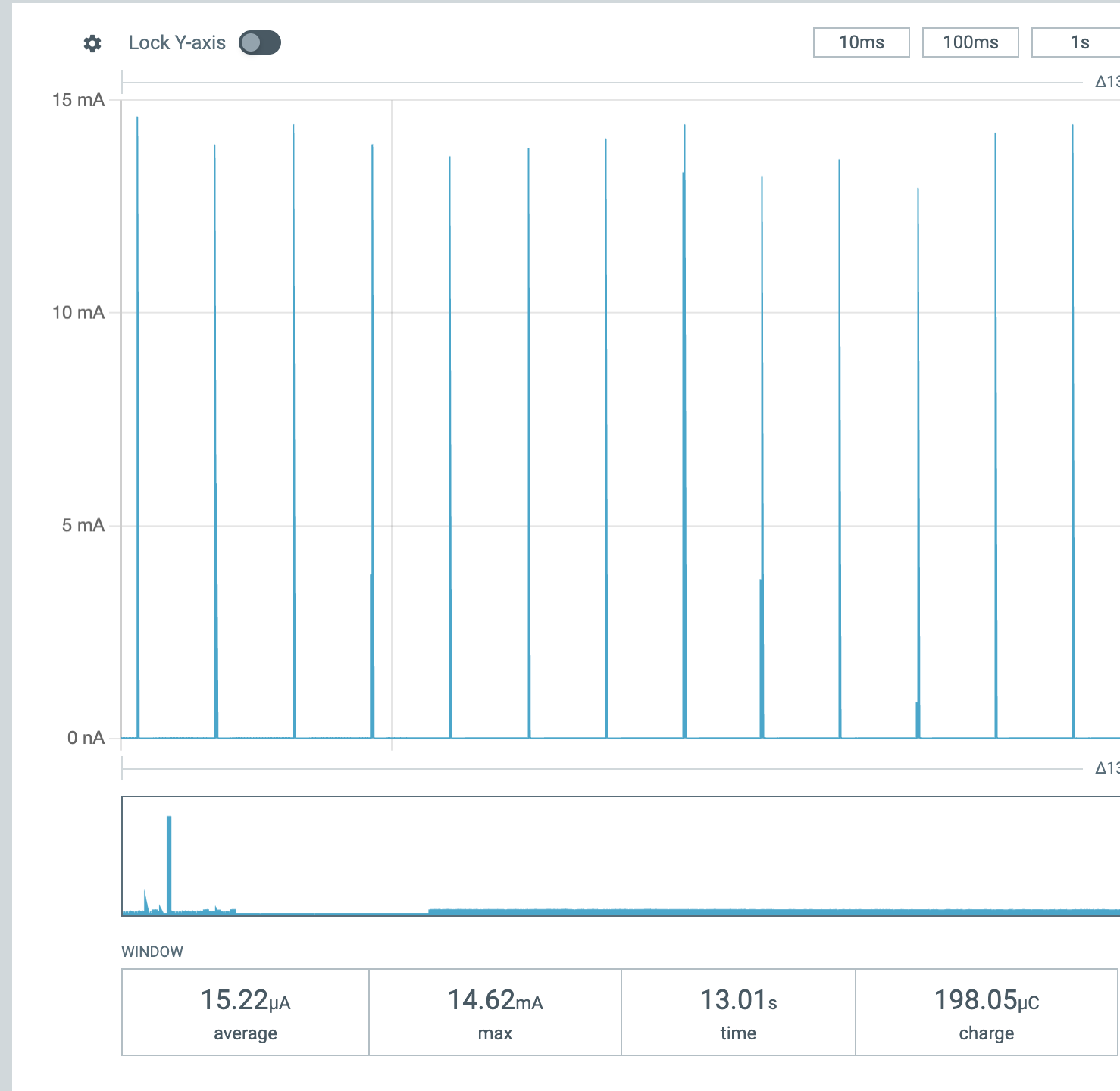
Idle current seems about right, hovering around 3.2uA, but the power spikes during advertising are far greater than what the power profiler suggests
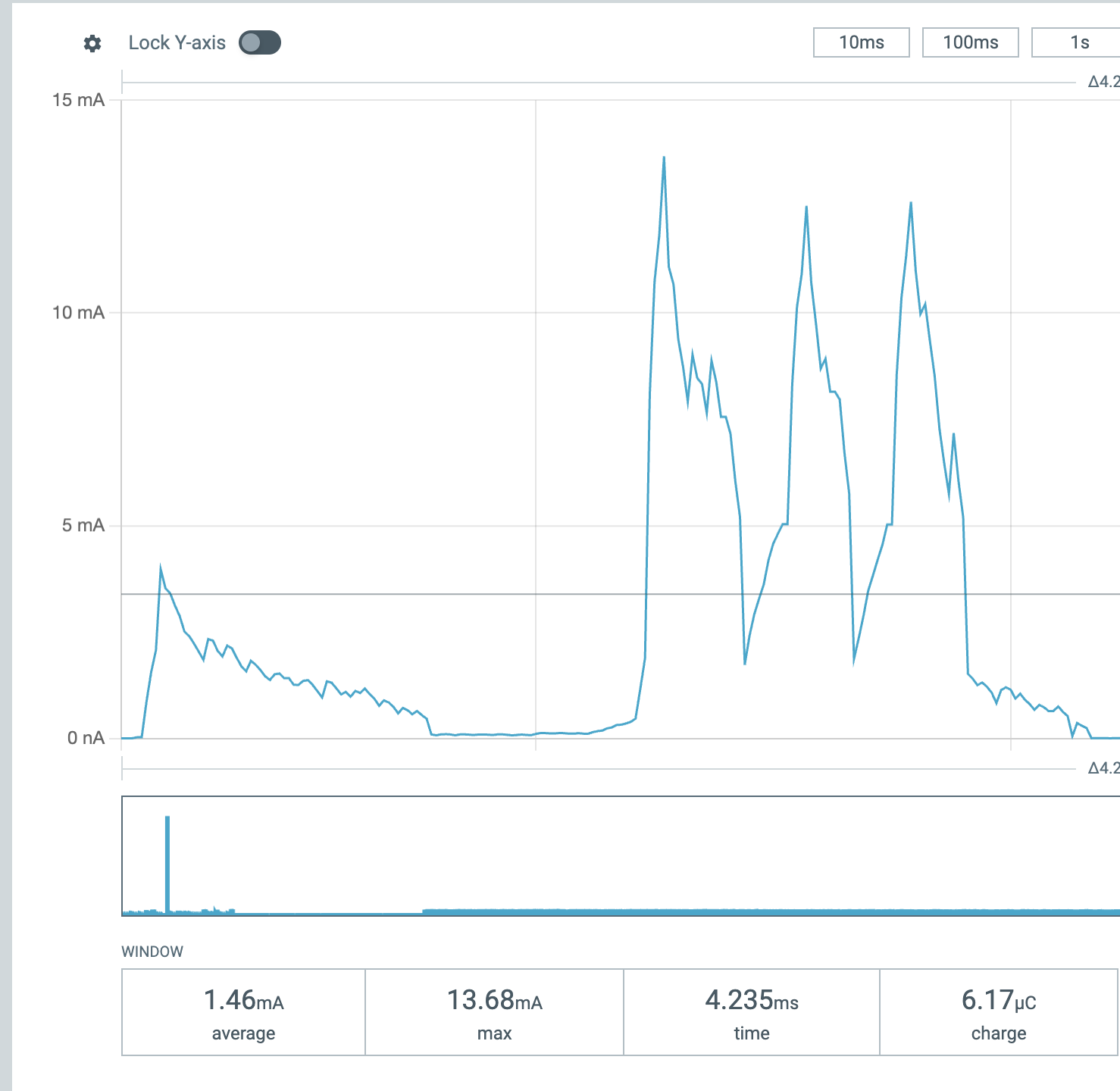
The TX peaks seem to average ~10mA which is double what is expected. Even if I was accidentally broadcasting at 8dBm the power profiler claims i should only be consuming 11uA total. Is there some configuration i'm missing? How can I achieve the same results as the power profiler?



